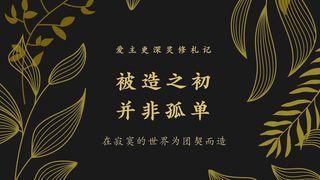Access To The Tabernacle预览

THE GATE IN THE FENCING OF THE COURT
This gate in the fence was between four pillars and about 9.2 meters wide and 2.3 meters high. The gate was the only entrance from outside to the tabernacle in the courtyard. We pay attention to three things in particular; the gate itself, the hangings and the pillars.
The gate was on the eastern side, the side of the rising sun. The first thing that was noticed once you went through the gate was the altar of sacrifice. Offerings for sins and thanksgiving offerings were done in the courtyard.
There were four pillars in the gate. They were made of acacia wood. Nowhere is it said that these pillars were of acacia wood. We assume that this is the case, because this is the only kind of wood that was used in the tabernacle (Exod. 26:32, 37).
The pillars had sockets of bronze while the tops were overlaid with silver and the hooks and bands at the top were of silver (Exod. 38:17). The covering (screen) of the gate was of fine twined linen, woven with blue, purple and scarlet thread and the white in the fine twined linen (Exod. 27:16). Each of the colours has a characteristic significance.
The gate as the only entrance to the court of the tabernacle speaks to us of Christ who is the only access to a right standing with God (Eph. 2:18; 3:12; John 10:9; 14:6). The four pillars symbolise the life of the Lord Jesus Christ as recorded in the four Gospels:
- Matthew saw Him as the King - purple is also the colour of royalty.
- Mark portrays Jesus as the perfect servant who was obedient unto death - the blood red (scarlet) in the covering points to his suffering, death and victory (Rev. 5:6; 19:13; Isa. 63:1-6).
- Luke represents Jesus as the Son of man - the white linen depicts Christ as man with spotless purity and justice (Rev. 19:8; Heb. 7:26).
- John sees the Christ as the Son of God, blue purple. It is a heavenly colour and speaks of heaven. Jesus declared that He came down from heaven (John 3:13).
We must keep in mind that to enter the gate of the court of the tabernacle, it had to be approached from the camp of Judah, as this camp was located on the east side of the tabernacle in front of the entrance. Our Lord Jesus Christ emanates from the descendants of Judah (Heb. 7:14). The brass bases or sockets of the pillars speak of judgement. The fine brass speaks of the righteous judgement of God on sin. In the book of Revelation we read of Jesus, the Son of Man: His feet were like fine brass (Rev. 1:15). Looking at the bases or sockets of the pillars, we see judgement; the earth on which they rest, are under the judgement. Looking at the tops of the pillars, we only see silver. The sockets for the pillars were bronze, the hooks of the pillars and their bands were silver, and the overlay of their capitals was silver (Exod. 38:17). In Exodus 38: 25-28 this silver is called the silver from those who were numbered. Exodus 30:11-16 explains that the silver of the numbered was called ransom and atonement money.
Every man of 20 years and older had to pay the Lord's ransom (half a shekel of silver). This silver was used for the sockets of the Holy Place, and the tops, rings and hooks of the pillars. Silver speaks of redemption or reconciliation. The Lord God speaks of his redeemed as silver: He will sit as a refiner and a purifier of silver (Mal. 3:3). The pillars of the court at the gate speak of: Salvation (silver) judgement (brass) through the Lord Jesus Christ's crucifixion (wood).
读经计划介绍

In this study plan, we will have an in depth look at the fencing and the gate as well as the entrance door and the veil of the Tabernacle. The fencing served as a barrier between the camp of Israel and the tabernacle. This prevented the people from coming directly to the tabernacle where God dwelt.
More

